Explore the Greenway Wildflower Meadow this August
Written by Darrah Cole, Senior Horticulturist and Designer
We invite you to explore The Greenway by discovering what’s in bloom along the 17 acres of our organically maintained lawns and gardens! The Greenway Conservancy has a dedicated group of volunteers who walk the park and record phenological observations every week. They are helping us (and you!) find the best, most exciting, and interesting plants – right now!
The Greenway Wildflower Meadow is in its third year, the pre-teen years for a meadow. Most of the characteristics and plants that will thrive are present but there are still a few years of growing pains and sorting out what it really wants to be. The taller plants keep stealing the show, making it hard to see the complex diversity and shorter, colorful plants and grasses underneath.
This August, Conservancy staff mowed a walking path in the Wildflower Meadow to allow visitors to more fully experience the meadow in all its glory! The path runs through the center of the meadow allowing you a look into the establishing grasses and summer flowering forbs (another term for wildflowers). Please come enjoy our meadow from the path, observe the bees and insects pollinating and foraging, and experience the city from a brand new perspective.
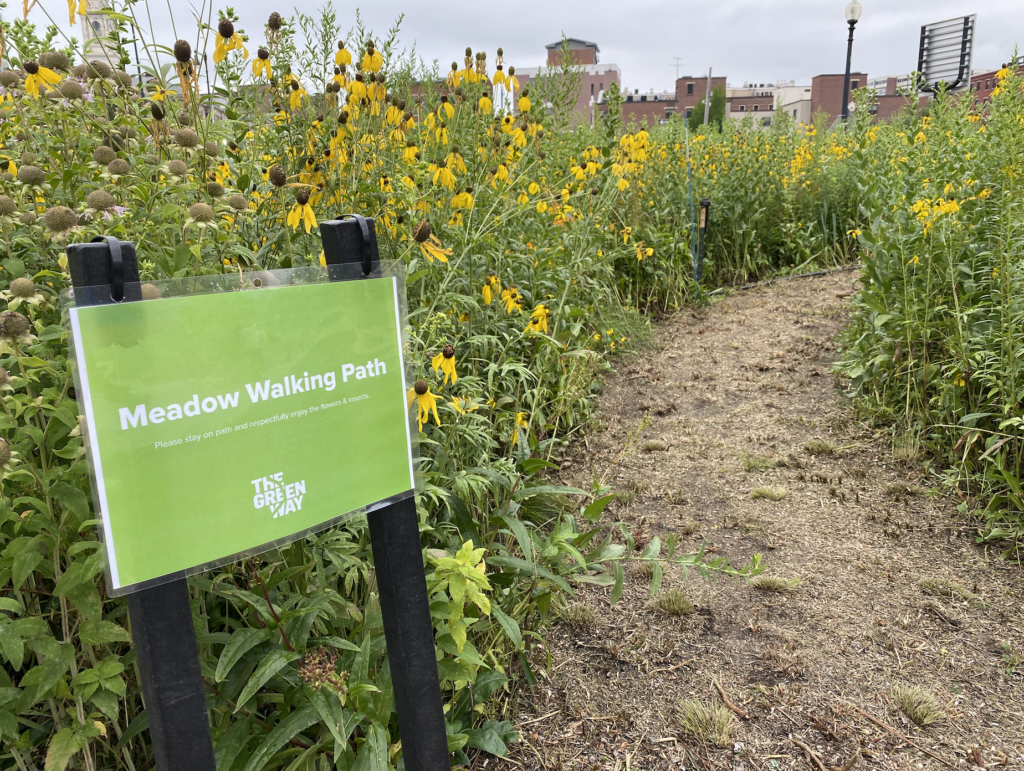
What’s blooming now in the Greenway Wildflower Meadow:
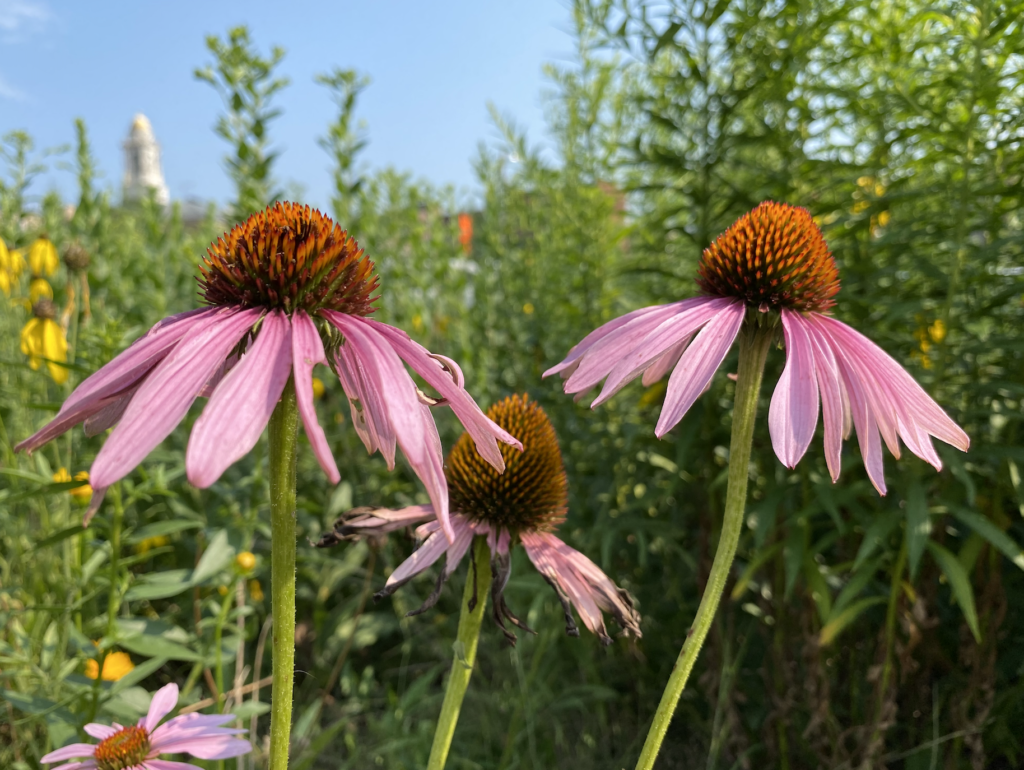
A couple of plants have been blooming since early July and are still showing up regularly, scattered throughout the meadow. These include the small white tubular Penstemon digitalis; the bright orange clusters of the Asclepias tuberosa; and the favorite pink, daisy-like Echinacea purpurea. Others blooming now add to the wonderful diversity, food, and habitat for birds, insects, and others – including you!
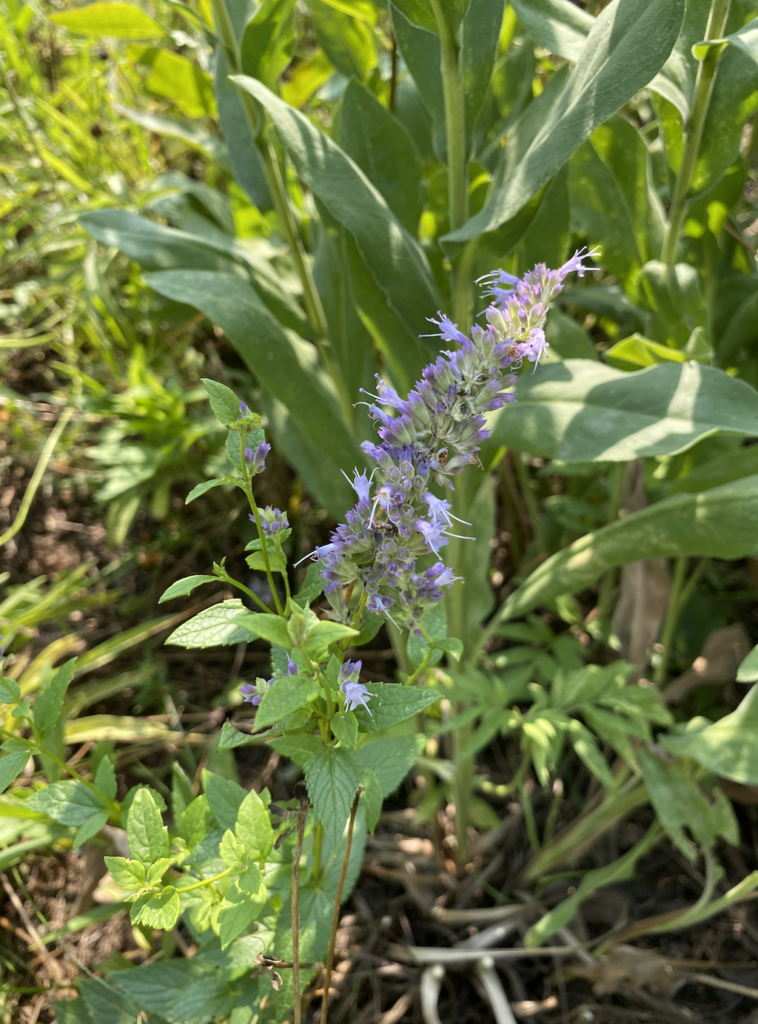
Agastache foeniculum
This late summer bloomer has fragrant leaves and blue to purple spiky flowers. It is native to North America and most common in the midwest. With luck, it will continue to seed throughout the meadow as it supports many bee species, butterflies and moths.
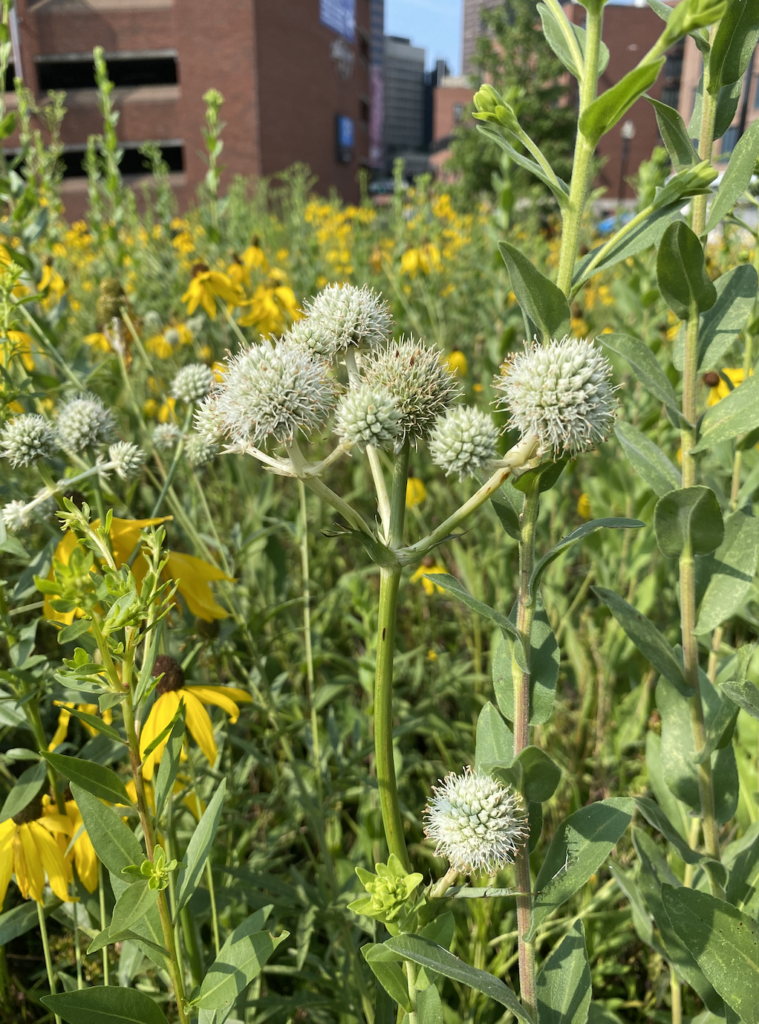
Eryngium yuccifolium
This plant looks a lot like a thistle but it is not in the thistle family. It is related to the parsley and carrot group of plants. We plant it for the visual interest and structure it provides with its stiff stems and clustered round, white flower heads. The common name of rattlesnake master comes from historically being a treatment for snake bites.
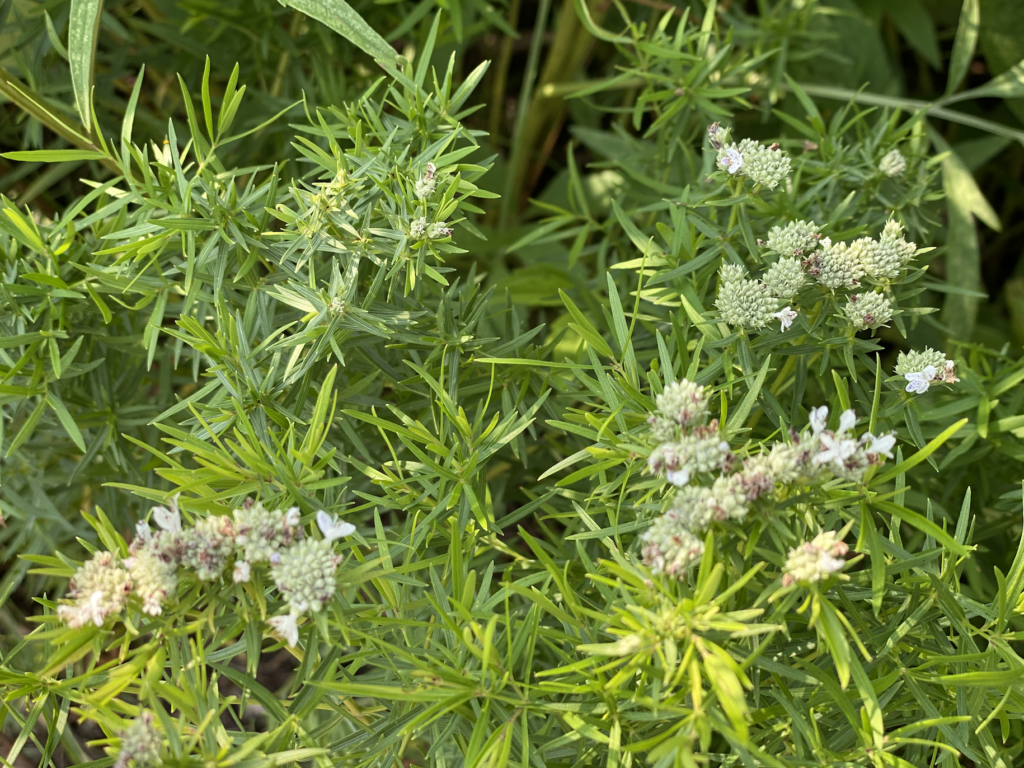
Pycnanthemum tenuifolium
A true native plant of eastern North America, this slender mountain mint is popular with many insects including bumblebees, solitary wasps, tachinid flies, beetles, and some butterflies. This is a shorter plant with a fluffy look from the dense, narrow leaves and tight clusters of small white flowers. It is harder to spot in the meadow but it is happily spreading in the understory of the taller goldenrods and coneflowers.
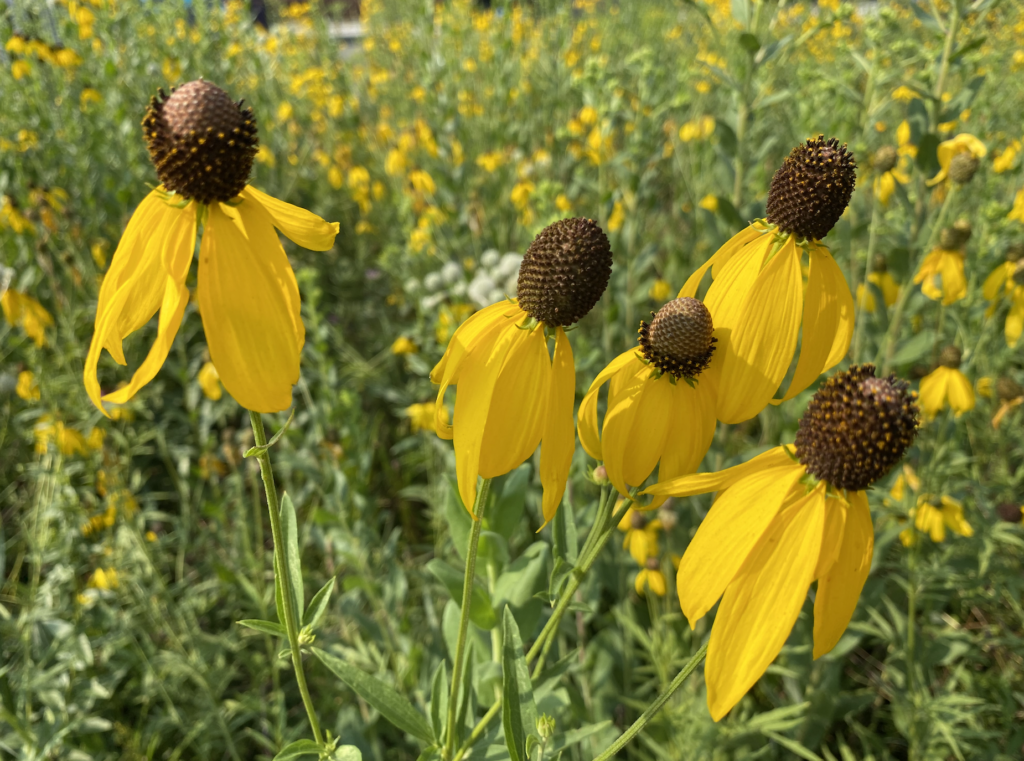
Ratibida pinnata
Commonly called grey-head coneflower, this plant is dominant in the meadow in August this year. The tall slender stems tower over most of the other plants, and center cones will eventually hold thousands of seeds. Many of these seeds will be foraged by small birds but plenty will end up on the ground starting new plants for next year.
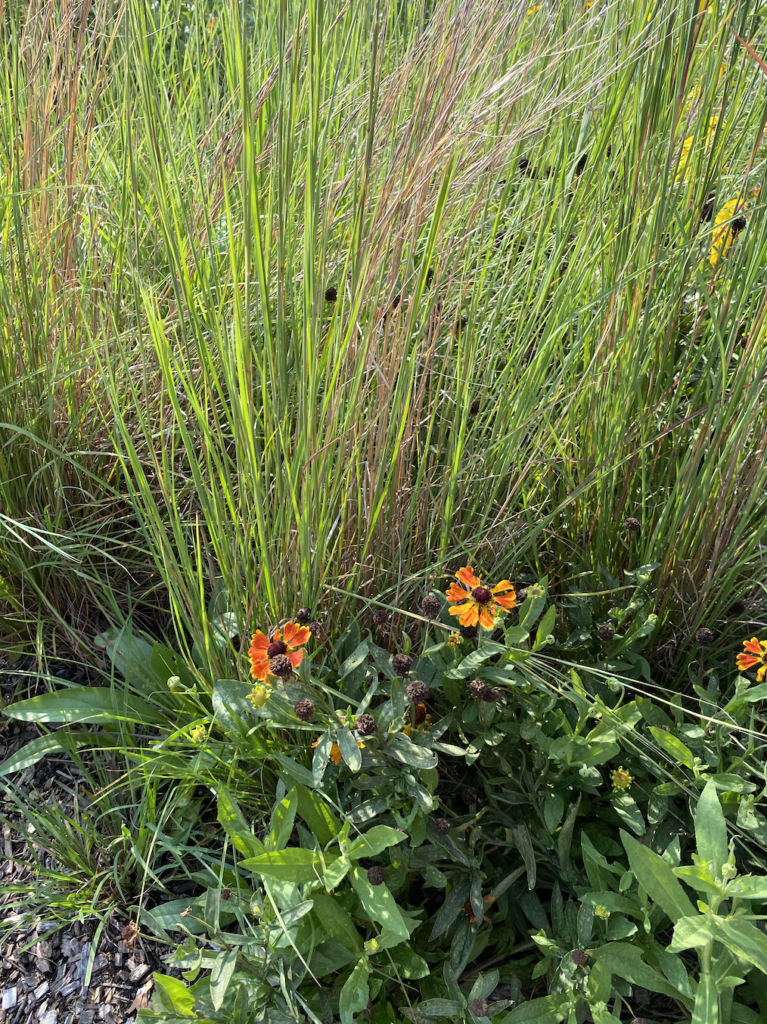
Schizachyrium scoparium
What a complicated botanical name for a great native grass we call little bluestem. This late-emerging species of grass is tough, drought-tolerant, and beautiful. And the rabbits don’t like it. As other summer blooming plants fade this grass will take more of the stage in the meadow, where it will continue as a strong presence through the winter months.
